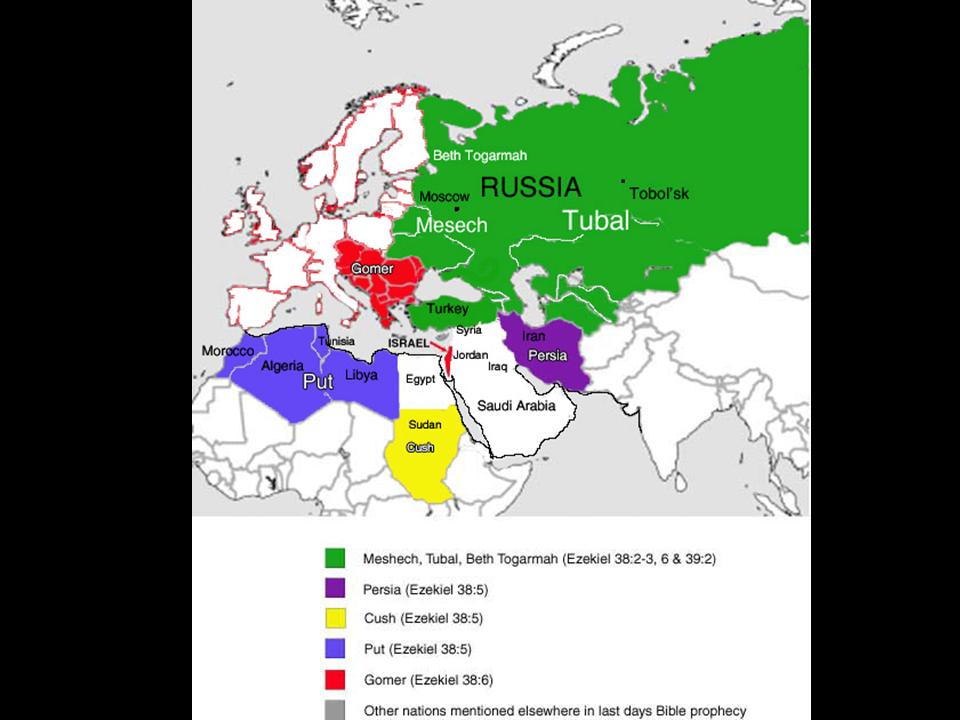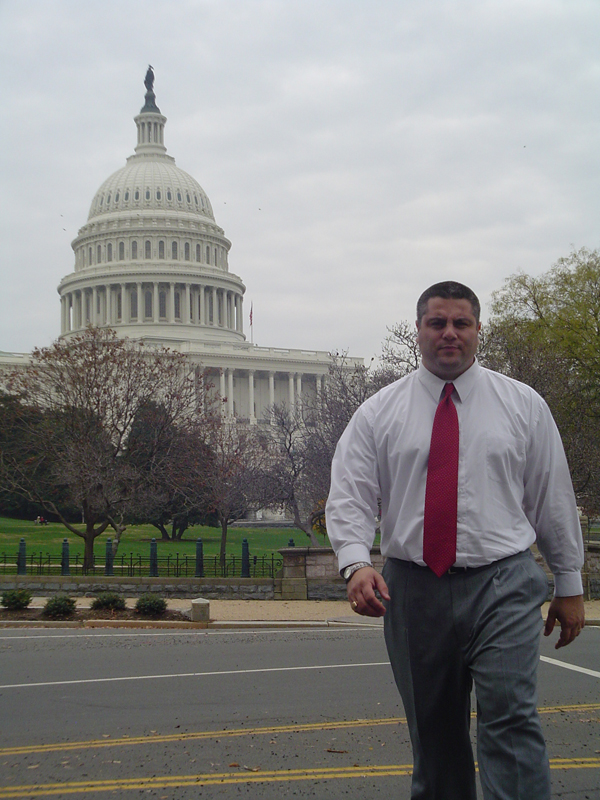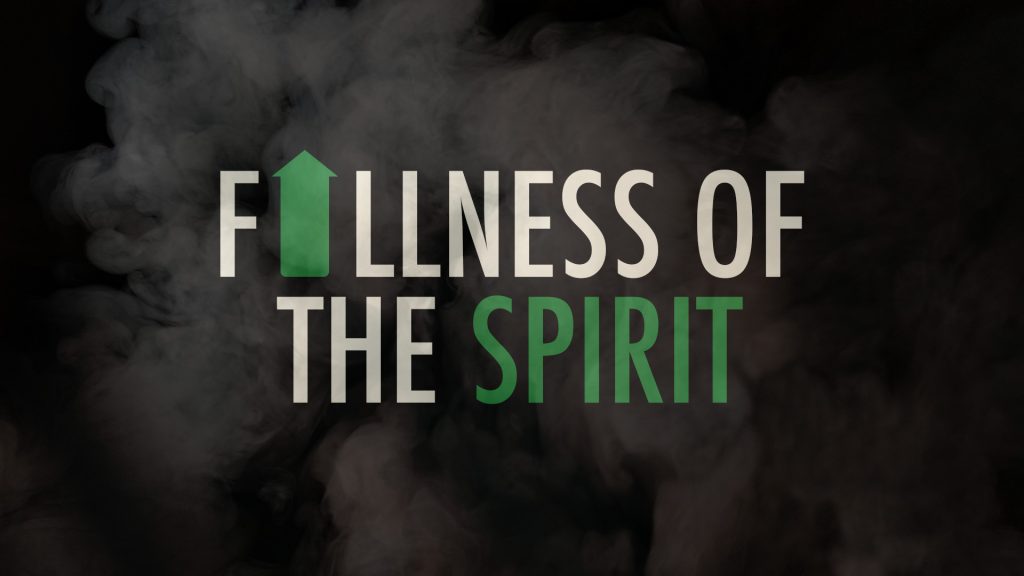Blinded by Smoke and Mirrors
Blinded by Smoke and Mirrors
by Kathryn Donev
We are not to mess around in any way, shape or form with any type of witchcraft or divination. This is a command that the Bible is super transparent about. There is no question whether or not it’s okay. In Exodus we are told not to tolerate a sorceress or a woman that has magical powers or paranormal abilities. In Leviticus it is clear that we are not to practice divination or fortune soothsaying. The message is so direct that in Leviticus 20:27 it says that a man or a woman who has a ghost or a familiar spirit shall be put to death; they shall be pelted with stones. Not just a slap on the wrist or a gentle verbal scolding. And I don’t know about you, but to me, being stoned to death is a dreadful way to die.
In Deuteronomy 18:10-11 it says, “Let no one be found among you who consigns a son or daughter to the fire, or who is an augur, a soothsayer, a diviner, a sorcerer, one who casts spells, or one who consults ghosts or familiar spirits, or one who inquires of the dead”. There is no question about it. These practices are all wrong. Period. End of story. No debate. No talking your way out of it. It can’t get any clearer. We know what will happen if we are tempted with this nonsense. Remember what happened to Aaron’s sons when they played with false fire. There are no second chances, and the consequence is for an eternity. Division from Christ. No eternal life. No Heavenly reward. It is serious. It’s not a game. Right? Are we clear to this point? Of course we are.
But are we really clear? All this stuff was surely just in Biblical times. Does Hocus Pocus exist today? Nah, it’s a fictional movie that’s no big deal to watch time and time again. We are surely strong enough to resist the indoctrinating. But are our children? We allow them to watch “The Little Mermaid” and suppress the small detail that one of the characters is a sea witch. HELLO… Identifying with such has become popular to the point we ignore when our children mark their foreheads with lightning bolts. Really! An iconic symbol of danger. In what reality is this okay? And I’m not even going to go down the rabbit trail of all the dark children’s songs we sing where babies are falling from trees and children are plagued with rings around the rosies.
The entertainment industry has completely enchanted us. They no longer even attempt to hidе the fact that they are bewildering with hidden agendas. Agendas that confuse. Right is wrong and wrong is right. Good is bad and bad is good. But woe to those that do this. We first ignore the evil, then we tolerate, then we promote it and then make fun of the people that still call evil, evil. But that’s okay. Make fun of me if you wish. Call me strange. I think protecting my family is more important than the opinion of others.
But, All Saints Day Eve T-shirts that say “I eat children” or “You put a spell on me” are just for humor. Haunted houses with ghosts, goblins and much more horrific monsters are merely for the thrill. Toy cauldrons that are paired with a mystical plushie that can help you cast a spell and the classical magic 8 ball that help you predict the future are just so cool. If all these are for entertainment purposes only; it surely can’t go against God’s Word. Well in Act, Elymas became temporarily blind when he performed magic. I think this might be a clue whether or not it’s an okay thing to do. Simon in the New Testament did magic like he was God. He tried to transcend the Truth, but his heart was not right. This still happens today in many places including heavily in the territory of Cyprus. The occultic influence is so burdensome that it is hard to break through the spirit of oppression and depression.
We are so blinded that we don’t even think when we say things like “mumbo, jumbo” which comes from the African term for a male masked dancer of arcane rituals. We loosely say, “It’s not in the cards”. Well duh….this is referring to a fortune teller’s reading. Tarot cards and ouija boards are no game. We might should read about King Saul’s experience when he sought out a medium at Endor. It’s real stuff you do not want to tangle with. Demons are real. And they will control your life every chance they get. Even worse, they will prow on the innocent and malleable minds of our children.
We have been so blinded by false mysticism that we have lost sight of Biblical truths. Yes, the Bible still has truths and not suggestions. So why do we think it’s okay to read fantasy stories that promote these distorted practices. We think it’s okay to dabble with the dead because it’s just a silly graveyard game and we all know that zombies aren’t real. We think it’s not a problem to use the ghost filter because they are so cute like fluffy marshmallows. Paranormal cartoons and TV series that promote attractive vampires are harmless. Anime is an innocent escape from reality in which we can create a distinction between real world and make-belief violence, sexual content and Japanese influences. And let’s not forget the fashionable witch and wizard hats. It’s no big deal to dress up in a costume. It’s only once a year. And goth is only dark clothes, right? But these are all so far from the truth. If your child is wearing dark clothes, dark make-up and bondage accessories, don’t ignore their cry for non-judgmental inclusion. It’s a slipper slope. 
Jannes and Jambres who opposed Moses in front of the Pharaoh were only deceivers, corrupt in the minds and worthless in the faith. I personally don’t want to be considered a deceiver, or corrupt or worthless. I want my heart to be in the right place. I choose life in Christ. I will do my best to be separate from these contrary beliefs and practices. I don’t even want to be tempted with the euphoric “pleasures” that they are thought to bring. No looking back, forward we must go. Undistracted by smoke and mirrors.
I will maintain claim to my family and my territory. It is true that we are to love everybody, but when we allow wicca influences to come into our community and begin to bewitch with innocent terminology like “apothecary”, “mood balancing” “centering” then we should be alert. Their idea of “alter” is not a Godly one. It’s definitely not a southern phrase when they say “blessed.” Astrology is not just looking at the stars either. Charms are not just cute trinkets and crafting is not an art project. God is the maker of all things. The moon, stars and all of nature belongs to Him and should be cherished as intended. Bodies grounding and moving to find peace should be center in Christ and not in Hinduism, Buddhism or Jainism. This is a warning to remove the blinders before there is no chance to turn back. Wake up people! Protect yourself and your family.
SIGNS of the LAST DAYS: False prophets and false Christs

SIGNS of the LAST DAYS: Earthquakes, floods, famines and plagues

Polk Revival Two Months and Going Strong

When we wrote back in March and again last month, we could hardly imagine what God had in store for our area. After eight full weeks of revival in Polk County more revivals are on our schedule this month. Swept by the wave of the Spirit, several independent churches have joined in with parallel meetings, thus multiplying the expected attendance exponentially.
Initially 7, now 8 churches and multiple ministries across Polk County, TN have set to seek after the will of God for revival in their area after the pandemic. The revival has gone on now two months each week changing to another of the original seven church locations. Thousands have attended in the past eight weeks alone with multiple saved, recommitted and called to the ministry in the past month. Churches from the greater Conasauga, Reliance, Ocoee, Old Fort, Benton, and Delano communities along with the two oldest Polk County congregations at Cookson Creek and Friendship Baptist, are joining piece by piece the original vision God has given to many ministers for this area of East Tennessee. As Polk Revival continues strong, the participants are requesting prayer from all who love the Lord and have awaited His renewal of the land and His people. https://polkrevival.com/
SIGNS of the LAST DAYS: Good called evil and evil good

PneumaReview.com: When, Why and How did we create it a decade ago
In the past 10 years since we released PneumaReview.com, we’ve received so many questions on how was it built and constructed to reach such a large audience with its intentionally broad spectrum of research in Pentecostal theology. While some of the technological expertise used is protected as know-how and intellectual property, most of the web architecture and social media strategies are based on free open source technology, which could and should be used by ministries and ministry websites who are dedicated to spreading the Gospel of Jesus Christ…
Introduction
I was first introduced to the Pneuma Review’s printed publication back in the seminary years. Yet not through the regular Pentecostal scholarly channels like a academia or SPS, but through the internet. Even then, the editors of this independent, but still scholarly publication, had a strong presence on the web. Sure, the Java technology used was a bit outdated, but still solid and getting the job done. By 2013, however, it was time for something new…
When
After following the printed issue of Pneuma Review for over a decade, around 2011-12 an obvious lagging was noticeable. It was a time when the volume of printed Pneuma Review has dwindled down and a clear alternative was in order within the time and space available. The only reasonable answer was in taking all past, current and future issues of Pneuma Review to the World Wide Web. It was in this time that our team decided to step in and help with the transition of the printed Pneuma Review to a custom designed internet community.
Why
Around 2013, the Pneuma Review has built up to a printed volume of some 1,600 scholarly articles and discussions plus numerous book reviews, announcements, and other valuable content. Obviously, an enormous task to envision, design, convert and present to the internet community. But it was well worth it.
The very idea of doing grass roots Pentecostal theology outside of a university or seminary context and yet on an academia level, was broadening not only the theological horizon of our movement, but the practical vanguard of Pentecostal academia.
How
First of course was the domain name. It was a miracle of its own, that after all these years on the internet, someone had not snatched the PneumaReview.com domain name before we were ready to make the transition to the internet. So our team’s first and foremost advice was, of course: Get the domain today!
But the domain was only the first of many challenges to resolve in the next few months of development. The difficulties with the digitalization of the printed publication had to first deal with the large overall audience reach and the database of both subscribers and articles. The high volume of daily visits was multiplied by the larger size of the articles. While a typical internet publication will have a 500-700 word limit, the Pneuma Review was presenting research topics of 12-15 at times even 20-25 single spaced typed pages. Just for example, Craig S. Keener’s review of John MacArthur’s Strange Fire was close to 20 pages. Combined with the growing number of articles read daily, social media involvement with ongoing discussions and its very specific audience, this was enough to scare away most web developers in the profession.
So how did we do it? Why the know-how in the technology used should not be disclosed as public domain, several strategic points in the building of the actual web property, web presence and web strategy may be of some help to readers who are working on a Pentecostal web project of their own:
- As a main priority, the search engine optimized web platform was designed to publish all past and future issues of the Pneuma Review in an compatible digital format
- A user friendly magazine-like design provided the options to publish individual articles and/or embed complete issues of the magazine in a PDF format
- Database pagination for larger volume of simultaneous users and database storage was implemented to server the enormous content volume (some 200Mb of database just for the starting archive of articles)
- SEO compatible web SCHEMA architecture was specifically designed with reader’s search engine experience in mind. The difficulty here was not providing volume to the search engines, which the article archive had in abundance, but sorting and selecting from thousand of search key words and phrases in order to attract the specificity of the audience
- An advanced administrative panel aided the day-to-day backend operation of the web platform
- Media embed (audio, video and live stream) was enabled as automated post attachments carried on both the website and social media
- Finally, to increase user involvement, the social network module included auto publication, audience engagement, feedback and discussions which were seamlessly integrated between many social properties while being stored serverside for the use of the platform
Just as a side note, the architecture design of Pneuma Review to this day remains one of the very few Christian web entities out there that were specifically designed to invoke reader participation. And to my knowledge, it remains one of the largest (with well over 2,000 scholarly publications) and absolutely free to use resource of Pentecostal academia on the internet.
The road ahead…
As technology constantly progresses, there’s always so much to improve. From a purely technological standpoint, however, there are several immediately necessary measures, which Pneuma Review is due. The free registration via social login and auto translation of the article database were both envisioned in the platform from its genesis. Their immediate implementation will open this invaluable web resource to the global community of Pentecostal scholars worldwide. With this move, the SEO optimization not only of generated content, but also social media archives (by rule disregarded by most search engines as per their privacy regulations) will open a massive amount of organic back linking, which will reaffirm the importance of the website as a global community building tool.
Furthermore, the current web platform offers several valuable opportunities for marketing the product, which began as a printed publication. The way it was designed and structured, the whole database is completely printable both as a periodical and volume/series format. Using this current technology makes printing once again an inexpensive and invaluable option, as potential revenue is not only sufficient to cover the cost of printing, but also to invest in further development of the web platform itself.
Finally, the building of a Pentecostal community on the internet with the resources of higher academia is perhaps the single and most important attempt to merge Pentecostal theology and praxis within the last couple of decades. Thus, recovering not only the grass roots of Pentecostal scholarship, but remerging the purity of doctrine with the ministry of the church.
Yes, in few short years social media has provoked an unprecedented response from the Pentecostal community. But social media is not here to stay. As it changes and progresses, it will soon be obsolete as everything else in technology. For this reason, the present opportunity to engage the global Pentecostal community with theology proper via social media must not be taken lightly. And why not even a move from “dead old white guys” theology and organization to understanding God through color, ethnos and gender that truly represents the internationalization of Pentecostal faith and praxis and involves ethnicity, adversity and vanguard of the global Pentecostal academia today?
Dr. Dony K. Donev holds a doctoral degree from the Pentecostal Theological Seminary. His dissertation work explored Bulgarian Churches in North America through a paradigm of ministry which studies and people groups with post-Communist origins within the global Pentecostal movement. Currently, as a post-graduate fellow, Dr. Donev is exploring the roots of Protestantism in Eastern Europe. He is available for consultations on building Christian communities online for the advancement of faith research and spiritual understanding.
SIGNS of the LAST DAYS: GOG and MAGOG

13 Titles and Resources at Flower Pentecostal Heritage Center
April 30, 2023 by Cup&Cross
Filed under Featured, News, Publication, Research

25 Years ago, I left D.C. and Never Looked Back…

Spiritual Fullness (Fullness in the Spirit) among Early Bulgarian Pentecostals and Today

Bulgaria’s early Pentecostals insisted on a spiritual fullness that included: (1) salvation, (2) water baptism and (3) baptism with the Spirit.[1] As a formula of spiritual experience, it satisfied the witness of blood, water and Spirit (1 Jn. 5:8) on earth; but also corresponded with the triune God in heaven (1 Jn. 5:7), from whom the believer’s spiritual experience originated. Many conservative Pentecostals in Bulgaria today still uphold “the fullness” teaching and would not use Bibles that exclude Johannine Comma (1 John 5:7) for these three “bear record in heaven.”[2]
However, even with the already present Trinitarian experience of the believer and the enormous theological Methodist influence, it is astounding that the doctrine of sanctification was not taught as a separate work of grace among Bulgarian Protestants. Even when after Pentecostalism spread in Bulgaria, it was not included in the tri-fold formula for “spiritual fullness” of the believer. During the persecution of the Communist Regime, speaking in tongues during Communion was done as a spiritual confirmation that the person has “fullness in the Spirit” or is not a government agent sent by the police to spy on the rest of the church. Interpretation often followed to confirm the spiritual stand of the believer. Early Bulgarian Pentecostals did not distinguish between the initial evidence and the gift of speaking in tongues. Even communist propaganda author Boncho Assenov, who categorized Pentecostals as a sectarian cult, defined this fullness as fundamental for the sacramental theology of the early charismatic communities in Bulgaria.[3]
[1] Mollov, 209.
[2] Zarev, 28.
[3] Boncho Asenov, Religiite i sektite v Bŭlgariia (Sofia: Partizdat, 1968), 167, 367.
See also:
The Practice of Corporate Holiness within the Communion Service of Bulgarian Pentecostals
Sanctification and Personal Holiness among Early Bulgarian Pentecostals
Water Baptism among early Bulgarian Pentecostals








